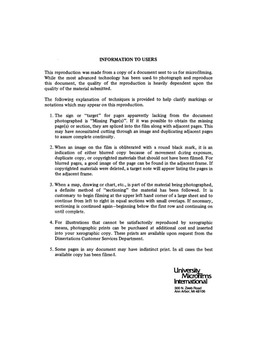| dc.contributor.author | Pegues, Alan Spencer, | en_US |
| dc.date.accessioned | 2013-08-16T12:28:51Z | |
| dc.date.available | 2013-08-16T12:28:51Z | |
| dc.date.issued | 1982 | en_US |
| dc.identifier.uri | https://hdl.handle.net/11244/5092 | |
| dc.description.abstract | Experimental results from the continuously fed apparatus demonstrate that a 23.4% conversion of a 49.5 mole% ETOH-H(, 2)O feed stream to an 88 mole% ETOH-H(, 2)O overhead stream may be accomplished with liquid carbon dioxide at 25(DEGREES)C and 1000 psia, and a solvent (CO(, 2)) to feed (ETOH and H(, 2)O) ratio of 3.12. The resulting bottom stream contained 41.5 mole% ETOH on a CO(, 2) free basis. | en_US |
| dc.description.abstract | Carbon dioxide at ambient temperature and elevated pressure of 1000 psia is employed as an extraction solvent for separating ethyl alcohol and water mixtures. A bench apparatus with a 460 ml/hr ethanol/water-feed rate demonstrates the feasibility of continuous operation of the process. The design of the next pilot plant is discussed. | en_US |
| dc.description.abstract | A growing national need exists for new and innovative separation processes using a new classification of solvents. Current separation techniques often are characterized by high daily energy costs or expensive and often environmentally unsound solvents. Fluids employed at elevated pressures may fill this need for a new class of solvents. | en_US |
| dc.description.abstract | The CO(, 2)-H(, 2)O binary is evaluated by a solubility equation incorporating pure component experimental data, and the second virial cross coefficient as intermolecular force contributor to the mixture fugacity coefficient. The solubility equation predicted behavior which was more typical of normal fluids than of the CO(, 2)-H(, 2)O binary. | en_US |
| dc.description.abstract | A mass balance on the bench apparatus demonstrates operating conditions closely matching equilibrium conditions due to high mass transfer rates in compressed solvents. Continuously fed bench apparatus operation for extended periods of time was achieved while observing the critical opalescence of carbon dioxide. Operation at the critical point of carbon dioxide is discussed in relation to process control of high pressure, near critical, and supercritical processes. | en_US |
| dc.format.extent | xi, 216 leaves : | en_US |
| dc.subject | Engineering, Chemical. | en_US |
| dc.subject | Ethanol. | en_US |
| dc.title | Carbon dioxide extraction of ethanol from water at elevated pressures / | en_US |
| dc.type | Thesis | en_US |
| dc.thesis.degree | Ph.D. | en_US |
| dc.thesis.degreeDiscipline | School of Chemical, Biological and Materials Engineering | en_US |
| dc.note | Source: Dissertation Abstracts International, Volume: 43-11, Section: B, page: 3674. | en_US |
| ou.identifier | (UMI)AAI8306746 | en_US |
| ou.group | College of Engineering::School of Chemical, Biological and Materials Engineering | |
